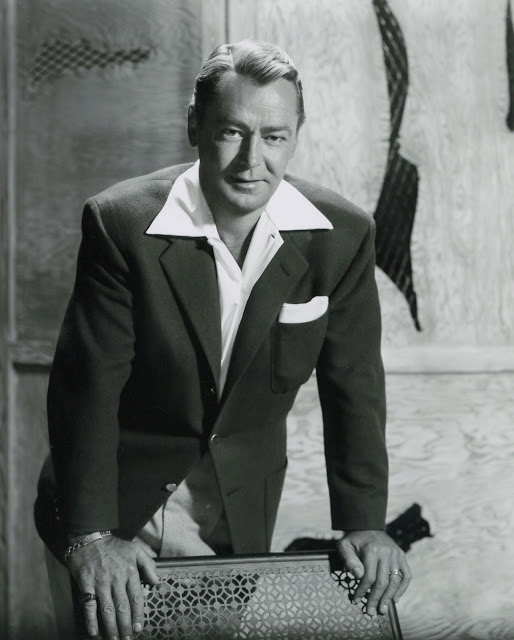20th Fox and Boy On A Dolphin --- Part Two
Trade unions got up in arms over so much overseas lensing. The A.F.L's Hollywood Film Council spread incendiary word, according to The New York Times, that a number of motion pictures being produced by American interests or with American financing are employing Communist union members in preference to members of anti-Communist unions. Dynamite charges these were, but times were desperate (October 1956 saw just over 12,000 US pic industry workers drawing a check, down 1,700 from the previous year).
 |
| Loren Sketches at Right by Jean Negulesco |
Word got out that Fox planned to roadshow Boy On a Dolphin after producing same in 55mm, this traced to West Coast personnel, but met "with surprise" by New York's home office. The sales department said the plan was news to them, and so did Fox's technical division, reported Variety, one exec adding that it's doubtful many exhibitors would go for the extra cost. 20th had used 55mm for Carousel, 35mm release prints thereby benefiting from greater clarity. Fox tech wizard Earl Sponable acknowledged that 55mm would add somewhat to the quality of the picture, but it would mean really dressing up the house, with special sound presentation, etc. What went unsaid, but appeared clear enough, was that Boy On a Dolphin didn't merit anything like deluxe unveiling such as these rumors promised.
 |
| Director Negulesco Offers Up-Close Guidance to Sophia Loren |
 |
| Ad For Boy On A Dolphin's Hollywood First-Run |
Fox had made what Variety called a "Wallopy" season preview called The Big Show, which among other things, announced fifty-five features for the coming year. The 110-minute trailer cost a quarter million and would run throughout the country to exhibitors, press, radio/TV reps, and "community leaders." 2,500 Fox stockholders attended the Roxy's morning premiere of The Big Show, and were invited to remain as guests for Boy On a Dolphin. 20th's grand gesture was seen as a frontal assault to competing television, but TV would win. Beyond The Big Show's push would come retrenchment and more lay-offs, salary cuts, and reduced production at Fox. Boy On a Dolphin, a hit for the Roxy, drooped elsewhere. From $3.3 million spent on the negative, $2.2 came back in domestic rentals, $2.4 foreign, with a final loss of $1.1 million.
From here came a half-century's (and counting) oblivion for a show that needed every inch of wide screens. Boy On a Dolphin went to NBC for new-minted Monday Night At The Movies, one of sixteen Fox titles leased to the network for two runs at $175,000 for each, the series to premiere February 4, 1963. Later in that decade (1968) came The American Cinema, a book by Andrew Sarris wherein he ranked directors, Boy On a Dolphin's helmsman among "Miscellany." Jean Negulesco's career can be divided into two periods labeled B.C. and A.C., or Before Cinemascope and After Cinemascope ... Everything After Cinemascope is completely worthless, said the critic. Sarris applied a finishing thrust thus: Negulesco's is the most dramatic case of directorial maladjustment in the fifties. Query to Sarris: Had he screened Boy On a Dolphin and others Negulesco wide-directed in their original Cinemascope format? To have done so would be at the least difficult in the late-60's when these films had long vacated theatres and were playing solely pan/scan on television. Boy On a Dolphin remains compromised in a transfer that is wide, but badly in need of remastering. What we occasionally see on TCM and The Fox Movie Channel does little credit to one of the 50's most striking travel folders. Suggestion to Screen Archives' Twilight Time DVD series ... give us Boy On a Dolphin on Blu-Ray with Hugo Friedhofer's fine score on an isolated track. There would be a must-have disc for 2012.





















































